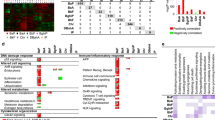Abstract.
Nitropolycyclic aromatic hydrocarbons (NPAHs) are found in diesel exhaust and ambient air. NPAHs as well as polycyclic aromatic hydrocarbons (PAHs) are known to have mutagenicity, carcinogenicity, and endocrine-disruptive effects. In the present study, the inducibility of the human cytochrome P450-1 (CYP1) family by NPAHs was compared with those produced by their parent PAHs and some reductive metabolites, amino-PAHs. Furthermore, to investigate the differences in the inducibility of the CYP1 family in human tissues, various human tissue-derived cell lines, namely HepG2 (hepatocellular carcinoma), ACHN (renal carcinoma), A549 (lung carcinoma), MCF-7 (breast carcinoma), LS-180 (colon carcinoma), HT-1197 (bladder carcinoma), HeLa (cervix of uterus adenocarcinoma), OMC-3 (ovarian carcinoma), and NEC14 (testis embryonal carcinoma), were treated with NPAHs, PAHs, or amino-PAHs. The mRNA levels of CYP1A1, CYP1A2, and CYP1B1 were determined with reverse transcription-polymerase chain reaction (RT-PCR). The cell lines were classified into two groups: CYP1 inducible cell lines, comprising HepG2, MCF-7, LS-180, and OMC-3 cells, and CYP1 non-inducible cell lines, comprising ACHN, A549, HT-1197, HeLa, and NEC14 cells. In inducible cell lines, the induction profile of chemical specificity was similar for CYP1A1, CYP1A2, and CYP1B1, although the extent of induction differed among the cell lines and for the CYP isoforms. Pyrene, 1-nitropyrene, 1-aminopyrene, 1,3-, 1,6-, and 1,8-dinitropyrenes slightly induced CYP1 mRNAs, but 1,3-dinitropyrene produced a 6-fold induction of CYP1A1 mRNA in MCF-7 cells. 2-Nitrofluoranthene and 3-nitrofluoranthene exhibited stronger inducibility than fluoranthene in the inducible cell lines. 6-Nitrochrysene induced CYP1 mRNAs to the same extent or more potently than chrysene. The induction potencies of 6-nitrobenzo[a]pyrene and 7-nitrobenz[a]anthracene were weaker than those of their parents benzo[a]pyrene and benz[a]anthracene, respectively. This study demonstrated that NPAHs as well as PAHs induced human CYP1A1, CYP1A2, and CYP1B1 in a chemical-, CYP isoform-, and cell-specific manner. Furthermore, the cell-specific induction of the CYP1 family was not related to the expression levels of aryl hydrocarbon receptor, aryl hydrocarbon nuclear translocator, or estrogen receptors α and β.
Similar content being viewed by others
Author information
Authors and Affiliations
Additional information
Electronic Publication
Rights and permissions
About this article
Cite this article
Iwanari, M., Nakajima, M., Kizu, R. et al. Induction of CYP1A1, CYP1A2, and CYP1B1 mRNAs by nitropolycyclic aromatic hydrocarbons in various human tissue-derived cells: chemical-, cytochrome P450 isoform-, and cell-specific differences. Arch Toxicol 76, 287–298 (2002). https://doi.org/10.1007/s00204-002-0340-z
Received:
Accepted:
Issue Date:
DOI: https://doi.org/10.1007/s00204-002-0340-z




